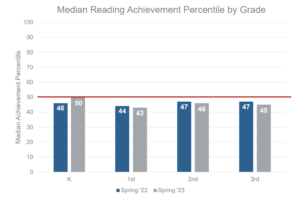
La serie Ed-Watch está diseñada para aumentar el acceso a la información sobre qué decisiones
se están tomando con respecto a la educación pública en el condado de Clark y Nevada.
Consejo de Educación del Estado de Nevada
¿Qué es el Consejo Estatal de Educación y de qué es responsable? El Consejo de Educación del Estado de Nevada adopta reglamentos basados en las leyes de Nevada, que se transmiten a los distritos escolares de Nevada para su aplicación. La Junta tiene 11 miembros en total (7 nombrados y 4 elegidos públicamente).
How often does the State Board meet? The Nevada State Board of Education meets once per month on Wednesdays at 9:00 AM or 2:00 PM. Click here to see the 2022 Board Meeting Schedule. Click here to visit Hope For Nevada’s #NVEd Calendar.
¿Pueden los miembros de la comunidad participar en las reuniones del Consejo Estatal? Se proporciona un tiempo para comentarios públicos al comienzo (para los puntos de la agenda) y al final (sobre cualquier asunto) de cada reunión de la Junta. Los miembros del público pueden proporcionar comentarios públicos por escrito a través del correo electrónico; los comentarios públicos se aceptarán a través del correo electrónico durante toda la reunión y se compartirán con la Junta Estatal de Educación durante los períodos de comentarios públicos. Los comentarios del público pueden enviarse por correo electrónico a NVBoardED@doe.nv.gov.
Haga clic aquí para consultar la lista de todos los miembros del Consejo Estatal.
Wednesday, October 4, 2023
Reunión del Consejo de Educación del Estado de Nevada
Haga clic aquí para consultar el orden del día de la reunión ordinaria del SBOE.
Haga clic aquí para ver la reproducción de la reunión.
¿Qué ocurrió en la reunión ordinaria?
Comentario público nº 1
- Concerns regarding high school start times
- Student traffic safety regarding shifting school start times
- Transportation concerns regarding shifting school start times
- Support for adjusting school start times due to student health concerns
- SB 282 implementation
- Concerns regarding the Read by Grade 3 cut score
Vice President’s Report
- Recognition of Week of Respect and Mental Illness Awareness Week
- Gratitude for the National Equity Project trainings
- Upcoming presentation from the Nevada System of Higher Education
Informe del Superintendente
Entre lo más destacado:
- Transportation Update: The State Board approves materials for transportation; $7 million has been set aside each year for the next biennium for charter school transportation, with 10 applications approved so far and others under consideration at the State Public Charter School Authority’s board meeting next Friday, October 13.
- Acing Accountability (SB 98): New accountability measures have been introduced by the State to ensure new funds are spent in a way that impacts student outcomes; it does not involved any additional testing for students. A dashboard will be implemented to measure how schools and districts are performing against these accountability metrics.
- Nevada Department of Education Updates: The Office of Inclusive Education was awarded $9.9 million for the Disability Innovation Fund. An additional $3.5 million grant was awarded to the Office of Assessment, Data Systems and Accountability for improvements to its data systems.
La Junta aprobó el orden del día consensuado
Entre lo más destacado:
- Approval of the Class Size Reduction Report
- Approval of the July 6 College and Career Ready Subcommittee meeting minutes
- Approval of the April 15 School Start Time minutes
- Revocation of two educators’ licenses
Revisar la agenda de consentimiento.
Board Approved Draft Regulation Language for High School Start Time Regulations
The Board reviewed a revised draft of the proposed regulation language for staggered and later start times for high schools that currently begin prior to 8:00 a.m. It states that school districts and charter schools that currently have high schools that begin before 8:00 a.m. must provide alternative options for families to address potentially negative impacts of early start times on student health, well-being, and academic performance.
A waiver will be available for schools facing unique challenges. After discussion, implementation timelines were shifted to begin in the 2025-26 school year, with a gradual approach of 35% of high schools within each district and charter school to offer alternative start time options at that time. The next year, an additional 25% of high schools will be required to implement these alternative options. A survey process will also be employed by each district and charter school to each school community, including the student body to gather feedback on current start times, adjustments, and other considerations (such as athletics, extracurricular activities, and family needs).
The document will be submitted to the Legislative Counsel Bureau to be rewritten in NAC-compatible language and will be sent back to the Board for a public hearing. Following that, the Legislative Commission will need to review and approve the regulation.
Explore the revised language.
Board Discussed the Creation of the State Board of Education Student Advisory Committee
The Board reviewed the creation of a Nevada Student Advisory Board for more direct communication between students and the Board. The goal is approximately 40 students statewide, appointed through an application process. The Student Advisory Board would convene on a monthly basis and focus on the upcoming agenda items of the Board of Education’s meeting. The Student Advisory Board would also craft a list of prioritized issues pertaining to Nevada students, and would fall under the purview of the Superintendent’s office.
Explore the draft document.
Board Discussed the Reorganization of the Clark County School District Training
The Board heard from Clark County School District on its approved reorganization training and resources, as required by regulation. They are also available on the District website, and training for mandatory participants is underway. The training is specific to the 2023-24 school year, as Senate Bill 282 will require some updates.
The materials include an overview, specific roles and responsibilities of different stakeholders, information relating to School Organizational Teams, resources SOTs can use as part of their responsibilities, and specific processes and procedures.
Explore the approved training material.
Board Discussed Read by Grade 3 and MAP Assessment Data
The Board reviewed Read by 3 and MAP Growth results. Read by 3 is a program to improve student achievement by ensuring that all Nevada public school students read at grade level by the end of third grade. MAP is an interim assessment typically given in the fall, winter, and spring, administered to over 12 million students nationwide. Student scores at or below the 40th percentile on the MAP Growth reading assessment generate additional support for students reading below grade level.
Overall, there is a slight decrease in reading achievement between spring 2022 and spring of 2023, as indicated by the chart below. Staff also noted a significant increase in the number of students taking the assessment from 2022 to 2023.

Further breakdowns by kindergarten, first, and second grade are also provided in the presentation materials (available below). There are achievement disparities among different student groups, as well.
Explore la presentación.
Board Discussed the Smarter Balanced Assessment Results, Nevada School Performance Framework, and Star Ratings
The Smarter Balanced Assessment (SBAC) participation rates statewide were 98.1% in English Language Arts (ELA) and 97.9% in math. ELA proficiency rates in 2022-23 were 41%, down from 43.7% in the 2021-22 school year. Math proficiency rates in 2022-23 were 31.3%, an increase from the 2021-22 school year (29.8%). Breakdowns by school district and by student groups was also provided in the presentation (available below).
Under the Nevada School Performance Framework (NSPF), each public school is issued an index score each year based on school performance measures (detailed below). A school’s star rating is associated with their index score.
- Elementary School: Academic achievement, growth, English Language proficiency, closing opportunity gaps, and student engagement
- Middle School: Academic achievement, growth, English Language proficiency, closing opportunity gaps, and student engagement (at a higher points value than elementary school)
- High School: Academic achievement, graduation rates, English Language proficiency, college and career readiness, and student engagement
Overall, in 2022-23, 85 schools were rated as five-star (9.8%); 79 schools were rated four-star (9.2%), 179 schools were rated as three-star (20.7%), 195 schools were rated as two-star (22.6%), and 223 schools were rated as one-star (25.8%). There were 102 schools, or 11.8%, that were not rated.
Explore la presentación.
Board Received a Demonstration on the Nevada System of Higher Education’s Data Dashboard
The Board received a presentation on NSHE’s College Readiness Data Dashboard. The Dashboard examines post-secondary enrollment and average ACT scores for recent Nevada high school graduates. It is available by clicking here.
Available on the Dashboard are resources, definitions, and methodology; graduates by diploma type; graduates by school district; graduates’ continuation after high school; average ACT scores by diploma type; continuation by different student groups and populations; and graduates’ continuation to NSHE institutions. Additional snapshots are also available using the Dashboard.
In the 2020-21 school year (the most recent presented), 36.1% of graduates continued to an NSHE institution within a year following graduation. In 2020-21, 24% of graduates continued to the workforce within a year following graduation; 27.4% of graduates were unknown in their continuation path within a year following graduation; and 12.5% continued to an “other” continuation pathway within a year following graduation.
Explore la presentación.
La Junta debatió futuros puntos del orden del día
Suggestions for future agenda items include an update on the Statewide Plan for the Improvement of Pupils, restorative justice practices, school improvement designations and status, kindergarten start times, District successes, and Read by Grade 3 cut scores.
Comentario público nº 2
- Smaller school districts to serve differing geographies
- Concerns regarding school scheduling issues at Moapa Valley High School
- Concerns regarding lack of communication between parents and CCSD administration
- Student access to high-quality schools and school equity pertaining to block scheduling at Moapa Valley High School
- Student concerns regarding the proposed high school start time regulations
- Concerns regarding the proposed high school start time regulations
The next Board of Education meeting is scheduled on Wednesday, November 1, at 2:00 p.m.
